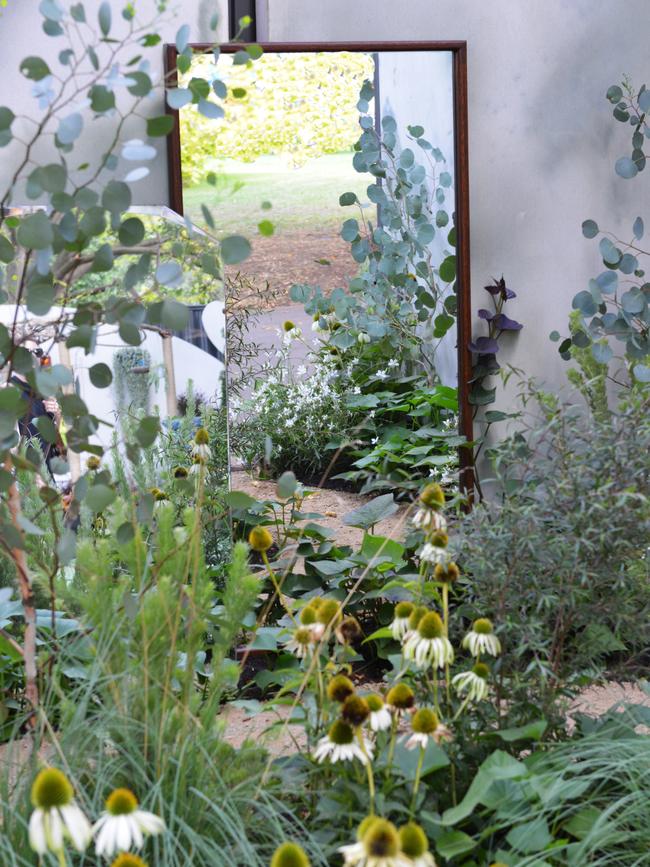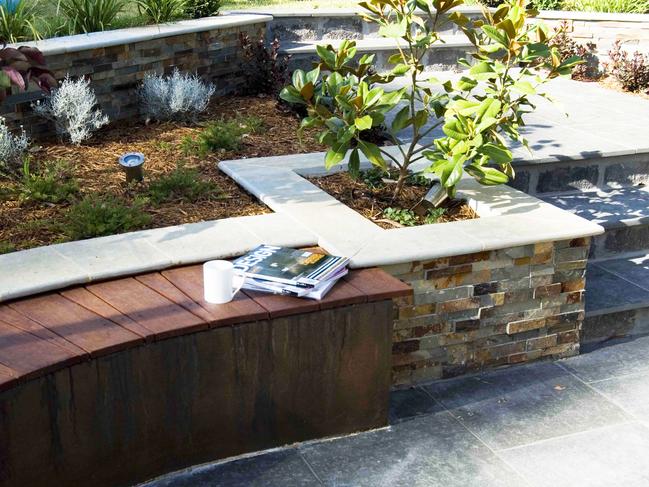Landscaping tricks: Garden design tips to make a space appear bigger
Too small? Too narrow? Too sloping? Gardens of tricky shapes and sizes can be made to look bigger and more attractive with some simple strategies.
THERE’S an old saying that cheats never prosper.
Many of us would like this to be true but sometimes it’s plainly not.
Yet for gardeners there is something of an ethical dispensation when it comes to cheating.
A little cheating can go a long way in a garden’s design.
If you prefer, look at it as making the most of what you’ve got. Professional landscape designers do it all the time. It can turn the minuscule into something magnificent, the agonisingly narrow into expansive beauty.
The key is to do it cleverly.
Proportion-wise, few gardens are perfect. Four common problems often faced are gardens that are:
TOO SMALL
EVEN country gardens can be on the smallish side.
Use a little cunning and an envelope-size garden will become a visual winner.
First off, maintain clean lines and use a few high quality plants rather than a hotchpotch mass of many.
Restrict the number of colours, and consider pots rather than beds.

Create a focal point to attract the onlooker’s eye — maybe an elegant fountain or statuary — so their first impression isn’t about the garden’s lack of size.
Use mini hedges to lead the eye to this feature.
Add vertical interest with wall gardens, climbers and creepers up fences or arches, espaliered fruit or flowering trees, tall architectural spire-type plants such as larkspur, snapdragons and delphiniums.
To create a visual illusion of more space, use large-leafed plants in the foreground and smaller-leafed ones toward the back.
If you use garden beds, construct them so they run away from the eye, making them slightly wider in the foreground than at the far end.
Plant soft, muted colours — pale blues, silvers and the like — to the back and bolder more colourful ones in the foreground to increase the illusion of depth.
Never allow the entire area to be viewed as one, camouflage boundaries.
Use arches or “windows” in hedges to suggest there is more garden beyond.
Place a mirrored window frame up against a fence to create the illusion of more greenery beyond. Or a door and frame with a path leading up to it.
TOO NARROW
AGAIN, don’t over-plant, and consider creating mini-garden “rooms” using bamboo screens, trellis or narrow walls of foliage to eliminate the corridor effect while not completely obscuring the view.
Small circles or patches of lawn or pebbles scattered along the garden will heighten this effect.
If having garden beds, locate narrow ones either side, featuring lighter, muted colours halfway along to create light and dark and give the suggestion of varying garden widths.
TOO WIDE & SHALLOW
SOFTEN or diffuse the rear boundary with plantings, using any of the ploys suggested above to create a sense of greater depth.
Again, use round circles or patches of lawn as interest points, but this time make those furthest away smaller than those at the front.
Consider two or three open-fronted garden rooms to distract from the lack of depth, and use focal points such as sundials, birdbaths, urns or seats to create interest.
Bring attention to sitting areas or entertaining nooks by planting exotic-looking, large-leafed plants nearby, distracting attention from garden size.
A few good shade trees will bring contrasts to further distract.

TOO SLOPING
SLOPING gardens can be difficult to design, but the results can be visually stunning, opening up possibilities of rock gardens, trickling ornamental water courses or cascades (today’s low-cost pumps work wonders) and terracing.
Construct retaining walls, with the upper side of each incorporating a garden bed (ensure drainage allows excess water to pass down and through the bottom of each wall).
Consider a few flat areas connected by terraces, or use timber decking to hide and visually flatten out difficult-to-work sloping sections.
Yes, a little deceit can solve many a garden problem.


